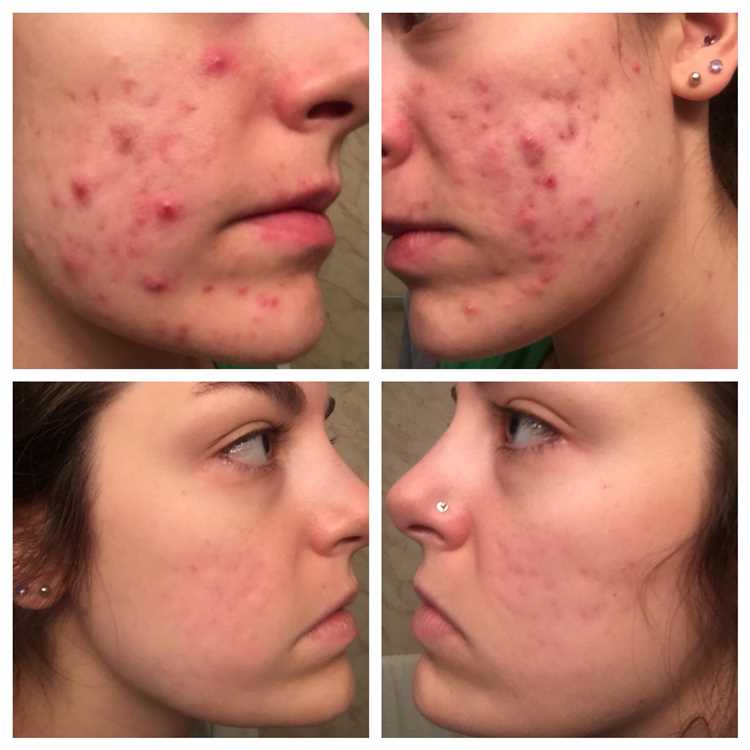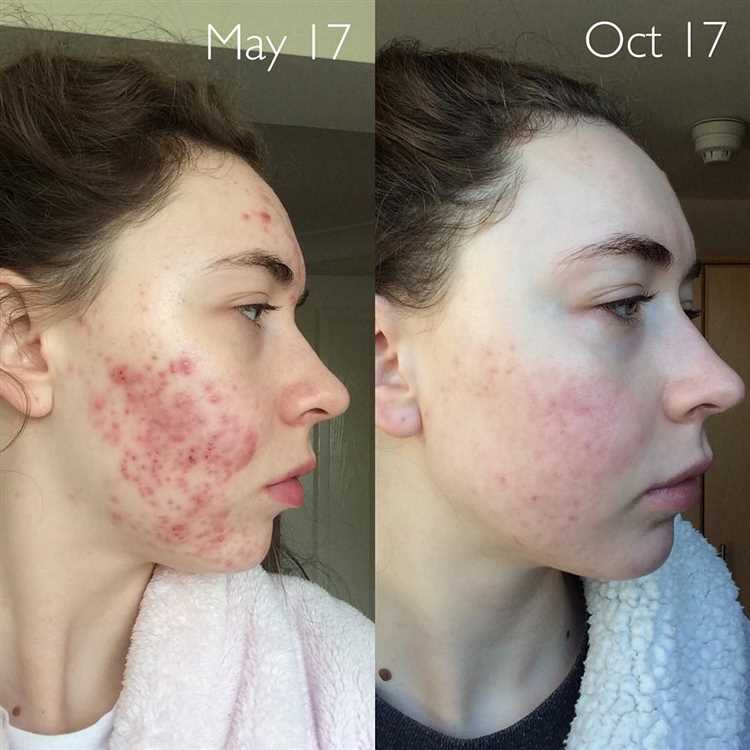

In recent years, a certain medication has revolutionized the treatment of severe skin conditions. This powerful drug has offered hope to many who struggled with persistent dermatological issues, providing a much-needed solution where other treatments have failed. However, it is not without its controversies and concerns, making it crucial to fully comprehend its implications before considering its use.
This medication, derived from vitamin A, boasts an impressive efficacy in combating chronic skin problems that are unresponsive to conventional therapies. Despite its remarkable success rate, it carries a range of potential side effects that warrant careful consideration. This dual nature of being highly effective yet potentially hazardous makes it a subject of intense discussion among both medical professionals and patients alike.
Before embarking on a treatment plan involving this potent drug, it is imperative to weigh the positive outcomes against the possible adverse effects. Understanding the full spectrum of its impact, both beneficial and harmful, will enable individuals to make informed decisions regarding their health. This article delves into the comprehensive aspects of this medication, offering insights into its usage, the associated precautions, and the critical factors to consider.
Comprehensive Overview of Isotretinoin Therapy
Isotretinoin therapy is a treatment approach used for severe skin conditions that haven’t responded to other medications. This section provides an in-depth look at the key aspects of this potent therapeutic option. By understanding its origins, application methods, and underlying principles, readers can gain a clearer picture of its role in dermatological care.
Initially developed in the late 20th century, isotretinoin has revolutionized the management of chronic and severe skin ailments. Its mechanism targets the root causes of these conditions, offering relief where conventional treatments fall short. The drug’s unique properties make it particularly effective, although its potent nature necessitates careful monitoring and adherence to prescribed guidelines.
The administration of this therapy typically involves a structured regimen tailored to the individual’s specific medical needs. Dermatologists assess the patient’s condition, medical history, and response to previous treatments before recommending this course of action. This personalized approach helps maximize the effectiveness of the therapy while minimizing potential adverse effects.
Understanding the foundational principles of isotretinoin is crucial for both patients and healthcare providers. It works by reducing sebaceous gland activity and altering the skin’s cell cycle, which helps in managing severe acne and other related disorders. These actions help to decrease inflammation and prevent the formation of new lesions.
As with any potent medication, the use of isotretinoin requires a comprehensive understanding of its implications. Patients must be informed about the correct usage, potential side effects, and necessary precautions to ensure safe and effective treatment outcomes. By adhering to these guidelines, patients can achieve significant improvements in their skin condition, contributing to overall well-being and quality of life.
How It Works

This section delves into the mechanism behind this medication, providing a clear understanding of how it functions within the body to achieve its intended effects. By exploring its interaction with various biological processes, readers will gain insights into the reasons for its effectiveness and the science supporting its use.
At its core, this medication operates by influencing the skin’s oil production. It significantly reduces the activity and size of sebaceous glands, which are responsible for secreting the oil that can lead to skin issues. By curbing the production of this oil, the treatment helps in mitigating conditions that thrive in oily environments.
Furthermore, it promotes the renewal of skin cells, accelerating the turnover rate. This process helps in shedding old, dead skin cells more efficiently, preventing them from clogging pores and contributing to skin problems. The acceleration of skin renewal is a crucial aspect of how this treatment achieves clear and healthy skin.
Another vital component of its action is its anti-inflammatory properties. By reducing inflammation, it helps in calming irritated skin and preventing the formation of new lesions. This is particularly beneficial for conditions that are exacerbated by inflammation, providing relief and reducing the severity of symptoms.
The medication also has an impact on the bacteria that contribute to skin issues. By creating an environment less conducive to bacterial growth, it further assists in controlling and reducing breakouts. This multi-faceted approach ensures that the treatment targets the root causes of skin problems from multiple angles.
In summary, this medication works through a combination of reducing oil production, promoting skin cell turnover, diminishing inflammation, and inhibiting bacterial growth. Each of these actions plays a crucial role in its overall effectiveness, making it a comprehensive solution for achieving healthier skin.
Positive Effects of the Treatment
Exploring the favorable outcomes of this particular treatment, it is evident that many individuals experience significant improvements in their skin condition. This section delves into the various ways this medication can enhance the overall health and appearance of the skin, providing relief from persistent dermatological issues.
- Reduction of Severe Acne: One of the most notable advantages is its effectiveness in diminishing severe acne that has not responded to other treatments. This can lead to clearer skin and reduced inflammation.
- Long-Term Remission: Many patients find that their skin remains clear for a prolonged period even after completing the treatment course, offering a lasting solution to chronic skin problems.
- Improvement in Skin Texture: Users often report smoother skin texture and a reduction in the appearance of scars and blemishes, contributing to a more even and refined complexion.
- Enhanced Self-Esteem: The psychological benefits are significant, as clearer skin can boost confidence and improve mental well-being, reducing the emotional stress associated with severe acne.
- Decrease in Oil Production: This medication helps to reduce the production of sebum, which is a key factor in the development of acne, leading to less oily skin and fewer breakouts.
Overall, the treatment offers a multi-faceted approach to improving skin health, addressing both the physical and emotional aspects of acne and its impact on daily life.
Possible Adverse Effects: What to Be Mindful of
When considering the utilization of this medication, it’s imperative to delve into the realm of potential drawbacks and untoward consequences that might ensue. Every pharmaceutical, irrespective of its merits, harbors within its ambit a spectrum of conceivable adverse effects.
One aspect deserving of meticulous attention pertains to the gamut of potential side effects that could manifest. These encompass a broad array of physiological responses that may occur in tandem with the administration of the medication, ranging from minor discomforts to more pronounced and deleterious outcomes.
Adverse reactions might materialize in various forms, spanning from mild irritations to more severe complications, thereby necessitating a thorough comprehension of the spectrum of possible repercussions. Such understanding empowers individuals to make informed decisions regarding the initiation and continuation of treatment.
Furthermore, it’s incumbent upon both healthcare providers and recipients alike to maintain a vigilant stance in monitoring any signs or symptoms suggestive of adverse reactions. Timely identification and intervention play a pivotal role in mitigating the potential exacerbation of untoward effects and safeguarding the overall well-being of the patient.
Eligibility Criteria for Treatment

Embarking on the journey towards treatment involves navigating through a set of criteria aimed at ensuring safety and efficacy. Before commencing any regimen, individuals embark on an assessment journey, scrutinizing their suitability for the proposed course of action.
| Age: | The suitability of age is a crucial consideration in treatment eligibility. Typically, individuals within a specific age range find themselves aligned with the recommended criteria. |
| Medical History: | Delving into past medical records offers invaluable insights into a candidate’s suitability. Factors such as prior conditions, allergies, or ongoing treatments play a pivotal role. |
| Severity of Condition: | An assessment of the severity of the condition aids in determining the appropriateness of treatment. It provides a foundation for tailoring the approach to individual needs. |
| Pregnancy Status: | For individuals of childbearing age, pregnancy status becomes a focal point. Ensuring the safety of both mother and potential offspring is paramount. |
| Previous Treatment Response: | An evaluation of past responses to treatment sheds light on the efficacy of proposed interventions. Understanding prior outcomes guides decision-making processes. |
By meticulously examining these facets, healthcare professionals formulate a comprehensive picture, determining the eligibility of individuals for the proposed treatment regimen. It’s a meticulous process aimed at safeguarding the well-being of each candidate, ensuring that the chosen path aligns harmoniously with their unique circumstances.
Tips for Safe Usage
Ensuring the proper and secure utilization of this treatment is paramount for maintaining well-being and mitigating potential adverse effects. Implementing prudent practices can significantly enhance the overall safety and efficacy of the regimen.
Understanding Dosage Instructions
One crucial aspect of utilizing this medication safely revolves around a comprehensive understanding of dosage instructions. It’s imperative to adhere strictly to the prescribed dosage and schedule outlined by healthcare professionals. Deviating from the recommended dosage can potentially lead to unintended consequences and jeopardize the effectiveness of the treatment.
Monitoring and Managing Side Effects
Vigilant monitoring of any emerging side effects is essential throughout the course of treatment. Being cognizant of potential adverse reactions enables timely intervention and adjustment of the treatment plan, if necessary. Additionally, promptly consulting healthcare providers regarding any concerning symptoms fosters proactive management and promotes overall well-being.
Understanding the Potential Drawbacks and Safety Measures
Delving into the intricacies of this treatment journey, it’s imperative to navigate through not just the promising aspects but also the nuances that warrant caution. In this segment, we unravel the layers beneath the surface to comprehend the intricacies that accompany this therapeutic regimen.
Exploring the Mechanisms: Before embarking on any medical intervention, it’s crucial to grasp the mechanisms that propel its functionality. Understanding how this treatment operates can empower individuals to make informed decisions regarding their health.
Weighing the Perceived Benefits: While the advantages may seem apparent, it’s essential to scrutinize them with a discerning eye. This entails a comprehensive evaluation of the purported benefits, juxtaposed against potential drawbacks, to paint a holistic picture.
Anticipating Potential Adverse Effects: In every therapeutic journey, there exists a spectrum of potential side effects that demand attention. By shedding light on these possibilities, individuals can proactively prepare themselves for any eventualities that may arise.
Unveiling the Risks: No medical intervention is devoid of risk, and it’s imperative to acknowledge and understand these potential hazards. By elucidating the associated risks, individuals can navigate their treatment journey with heightened awareness and vigilance.
Adhering to Safety Precautions: Amidst the pursuit of therapeutic benefits, safety should always remain paramount. This section elucidates the indispensable precautions and guidelines to mitigate risks and ensure a safer treatment experience.
Determining Eligibility: Not everyone may be an ideal candidate for this treatment, and eligibility criteria play a pivotal role in discerning suitability. By understanding the parameters that dictate eligibility, individuals can approach their healthcare providers armed with pertinent information.
Fostering Safe Usage Practices: Armed with knowledge and awareness, individuals can optimize the efficacy of this treatment while minimizing potential risks. This segment offers practical tips and insights to foster a culture of safe and responsible usage.
Tags: accutane, buy accutane